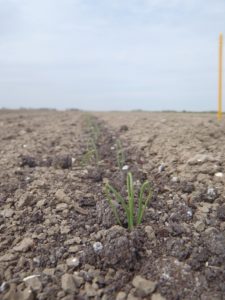Soil
Home > Soil > What does soil deliver? > Moisture retention capacity
Moisture retention capacity
Organic matter makes a major contribution to moisture retention, especially on sandy soils. The presence of aggregates and crumbs creates pores of different sizes. It is mainly the micropores in the aggregates that increase moisture retention capacity.

To ensure optimal crop growth, it is essential for the soil to have the correct moisture content. Soil moisture is strongly influenced by the weather. In addition, soil type and soil structure determine how much water is available to the crop. Sandy soils hold little water compared to clay soils. After a rain shower, the water quickly sinks into the soil. After that, the soil is at “field capacity” and holds the maximum volume of water. In the case of sandy soils, the percentage of moisture at field capacity is lower than for clay soils. If it does not rain over a prolonged period, the water evaporates from the soil and is absorbed by the plant. The moment water is no longer available to the plant at all, the wilting process begins. The timing of the wilting varies from crop to crop.
Improving soil structure helps balance the oxygen and the moisture in the soil. Extremes in moisture balance can be reduced by maintaining a well-balanced soil structure in both wet and dry conditions. A better soil structure holds more moisture and for longer. As a result, fewer puddles form on land in wet conditions and the soil dries out less quickly during prolonged droughts, which improves crop growth and yield. A better soil structure – which can retain moisture better – is created by increasing the amount of organic matter in the soil, by promoting soil life in the root zone and by preventing the substrate becoming compacted. Practical measures include adding compost and manure, reducing soil load, maintaining constant soil cover and using green manures.
Sources:
Bokhorst, J., C. ter Berg, M. Zanen en C.J. Koopmans (2008). Mest, compost en bodemvruchtbaarheid – 8 jaar proefveld Mest als Kans. Louis Bolk Instituut LD11.
Dijk, M. van en S. van Miltenburg (2013). De invloed van bodemstructuur op het watersysteem. STOWA 2013-13A, Amersfoort.
Schaap, B.F., P. Reidsma, J. Verhagen, H. Wolf, en M.K. van Ittersum (2013). Participatory design of farm level adaptation to climate risks in an arable region in the Netherlands. European Journal of Agronomy, 48:30-42.
Snellen, B. en T. van Hattum (2014). Bodemvochtgestuurd beregenen. Stowa Deltaproof, composed by Alterra, Wageningen.


